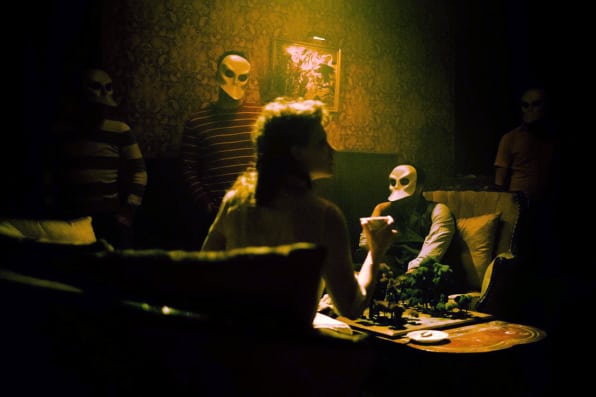But for as popular as immersive theater has become, it hasn't solved its scale problem. Productions like Then She Fell offer incredible intimacy between the actor and viewer, but to do so, they only fill 15 seats a night. That means a year of shows can accommodate less people than a single movie theater for half a day.
A few years ago, creator Jennine Willet was having drinks with 14 creatives at Disney who worked on park attractions. They'd come to see how she crafts plays like Then She Fell. "They were like, I loved that scene with [redacted], how could you make that for 600 people?'" she says. "I think I spit my cosmo. I said, ‘I think that's a paradox. I don't think you can have intimacy with 600 people.'"In person, that's probably true. In VR? That rules of intimacy can change
Source: The Sexy, Scary Play That's Influencing Google, Facebook, And Disney | Co.Design (via Jon Kruithof)
This is basically in line with what I'm thinking about for my PhD research - how can the lessons of theatre and dramaturgy and performance be adapted for other media?
The production of Then She Fell sounds amazing - and also insanely exclusive. An in-club-event for in-club-thought-leaders. But, with tools like VR and AR in the hands of new storytellers, these kinds of immersive alternate reality productions are going to be coming from individuals and indie developers. This is partially what the future of storytelling will involve. And - where I'm hoping to go with this - how can these experiences be used to foster reflection on performance and learning?
